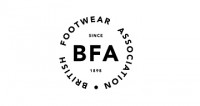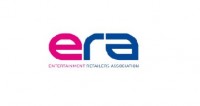Regulations, legislation and standards
< Back | Last revised: 19th March 2018
Disclaimer


The information below summarises the relevant regulations for electric bikes as far as we (The ACT) understand at the time of writing. We believe that the below is an accurate interpretation of what the law states, however we cannot accept liability for any information that is incorrect or has since become out of date. We also cannot police any retailers who conduct any illegal activity either through choice or through ignorance of the law.
"Ultimately the interpretation of the law is a matter for the courts based on individual facts of any particular case. You are therefore advised to consult the relevant legislation and, if necessary, seek independent advice on specific legal questions." [1]
Key points
- E-bikes that meet the current EAPC regulations, minus a few exceptions, are treated as normal bicycles. The basic requirements are:
- Any other e-bikes that do not meet the EAPC regulations are subject to type approval and any associated registration, tax and licencing.
We are awaiting government confirmation in terms of how e-bike regulations may be affected by the exit from the EU. To read all that we know so far please visit EU Exit updates for e-bikes.
EAPC Regulations |
Pedal Cycles Regulations |
Type approval |
"Twist and Go" cycles |
Northern Ireland |
EAPC Regulations |
Pedal Cycles Regulations |
Type approval |
"Twist and Go" cycles |
Northern Ireland |
Last revised: 19th March 2018
Type approval


All e-bikes that do not meet the current EAPC regulations, as well as some "Twist and Go" cycles (detailed in the next section), are subject to type approval.
Type approval assesses and confirms the specification and performance of an e-bike, resulting in the e-bike being assigned a vehicle category under EU law. E-bikes requiring type approval are L-category vehicles with the relevant category for powered cycles being L1e (light two-wheel powered vehicle), as defined in Regulation (EU) No 168/2013. Category L1e is then sub-categorised into:
- L1e-A (powered cycle), for powered cycles;
- fitted with pedals that can be used to propel it;
- where the maximum continuous rated power doesn't exceed 1kW; and
- where the assistance offered ceases beyond a speed of 15.5mph.
Cycles with three or four wheels which also meet L1e-A criteria are classified as technically equivalent to a powered cycle. - L1e-B (two-wheel moped), for powered cycles;
- where the maximum continuous rated power doesn't exceed 4kW; and
- where the maximum design vehicle speed doesn't exceed 28mph.
A full version(s) of the relevant EU regulation(s) (including a full list of category L1e vehicle criteria) can be found on the EUR-Lex website - Regulation (EU) No 168/2013
All e-bikes which are intended to be used on the roads or any publicly accessible land in Great Britain, that do not meet the current EAPC regulations and are subsequently type approved as category L1e vehicles (both L1e-A and L1e-B) are classified as mopeds. For example speed pedelecs are L1e-B vehicles, and therefore for road use are classified as mopeds in Great Britain.
To be used on the road they must comply with all the same rules as mopeds do, including being registered, taxed, insured and have an MOT. The rider must also have the appropriate licence and/or training and wear a helmet which meets the relevant safety regulations, amongst other things.
For more information about selling non-EAPC e-bikes, please see the 'Selling S-Pedelecs' section.
Any e-bikes which are intended to be used on the roads or any publicly accessible land in Great Britain, that do not meet the current EAPC regulations and are subsequently type approved as any other category of vehicle (e.g. a motorcycle) must follow the rules relevant to that category.
If the intended use is solely ‘non-publicly accessible’ off-road riding, then e-bikes with a power rating that exceeds 250W are legally classified (and therefore must comply with the same rules) as off road motorcycles. This means that they are only allowed to be used where off road motorcycles are allowed to be used, and will have to be either EC Type Examined or on the FIM competition list.





















